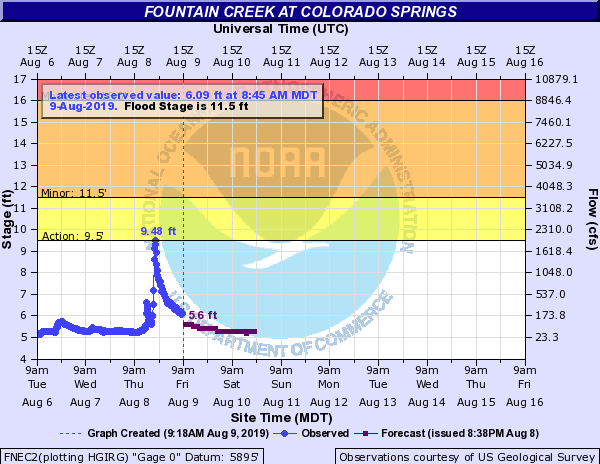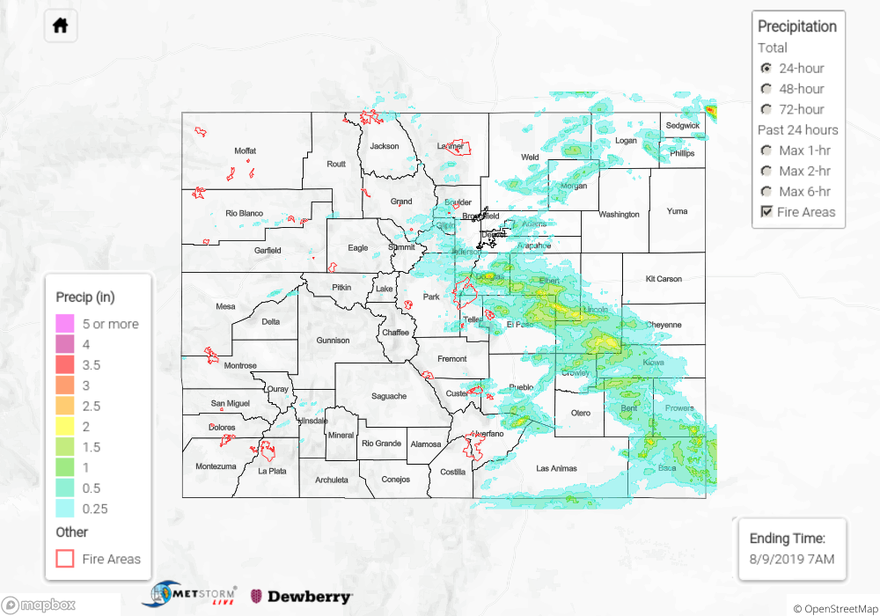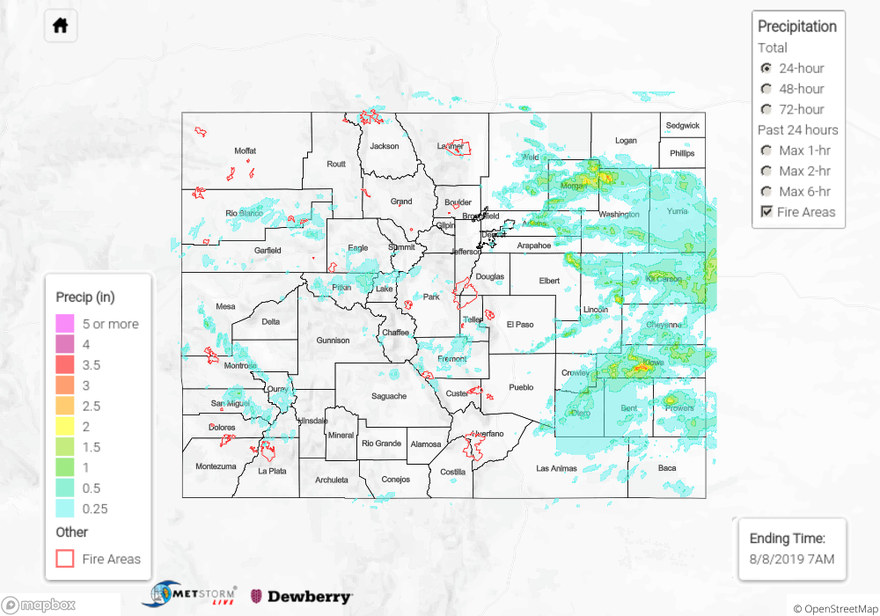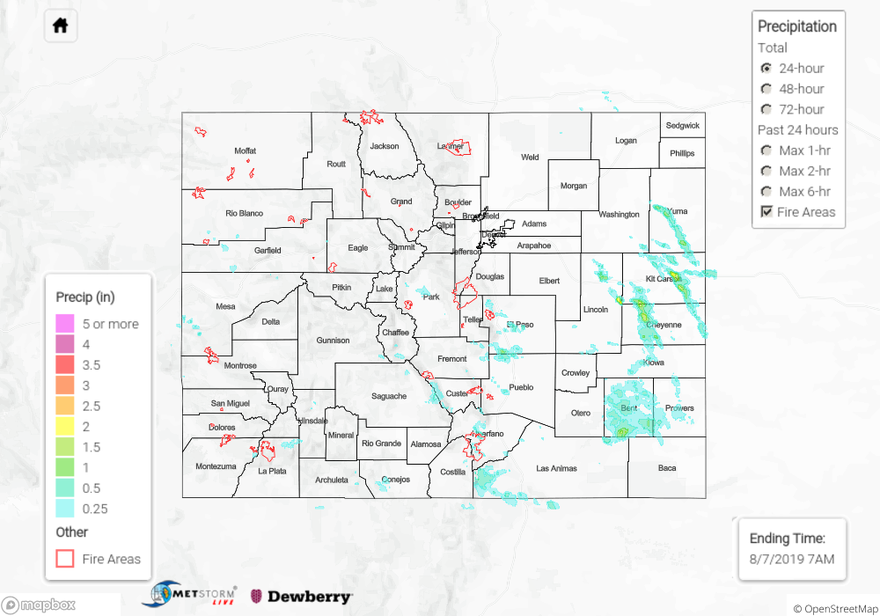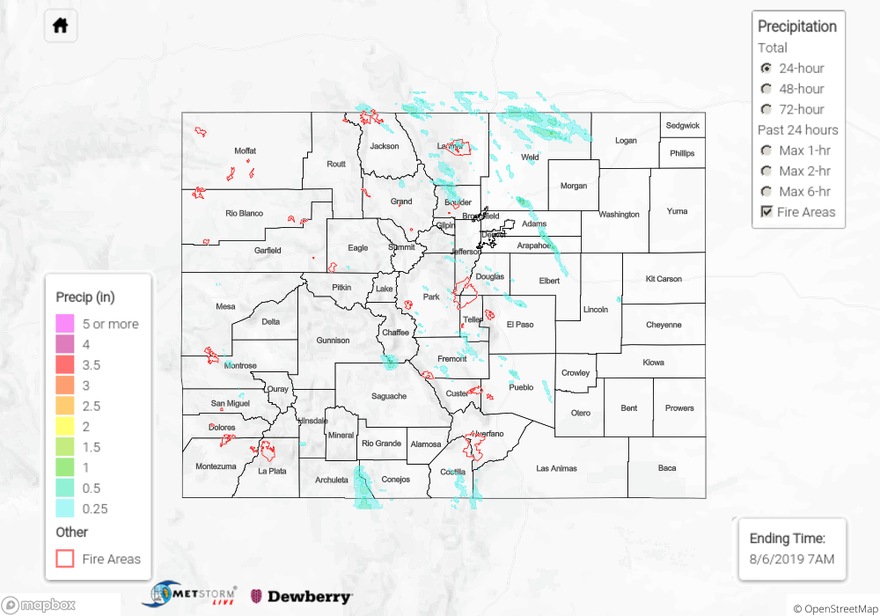Issue Date: Friday, August 9th, 2019
Issue Time: 10:10AM MDT
Summary:
Storms began to initiate yesterday around 1PM. As storms moved into the moisture rich environment over the adjacent eastern plains, they dropped quite a bit of rainfall. They were moving fairly quickly, which kept totals from being too high. Therefore the higher totals you see over the Palmer Ridge are from a one or more storms passing over throughout the 24-hour period. Max 1-hour rainfall rates were still impressive though for how fast the storms were moving (1-1.5 inches). One storm over NE Huerfano County recorded 2.5 inches. There were several ALERT gages over Douglas County that produced over an inch per hour as well with the highest gage near Perry Park at 1.7 inches (from two storms). A Flash Flood was reported east of I-25 near the Air Force Academy where 6 or more inches of rain were flowing over the roadway. A nearby spotter report 1.5 inches just south of the report. The WWTP station at the USAF recorded 2.68 inches for the 24-hour period! Near Manitou Springs, another USGS gage recorded 2.11 inches for the 24-hour period. Not surprisingly, this heavy rainfall caused Fountain Creek at Colorado Springs to spike into Action Stage (see below). There was even a brief touchdown of a tornado (source: spotter) near Meadow Lake Airport. Storms yesterday were producing some strong outflow boundaries, so the dust on the ground could very well have been associated with this feature rather than a tornado touchdown. NWS will do a survey in the next day or two to confirm the touchdown. Near Wetmore, 1.7 inches of rain was reported with street flooding and rocks on Highway 96. This will enhance the flood threat over the Junkins burn area this afternoon as soils are likely saturated, which would increase runoff and the potential for flash flooding.
Alamosa even saw some rainfall with trace amounts recorded in the interior of the valley. Along the edges near Del Norte, close to a half inch was recorded by two CoCoRaHS stations. Best rainfall over the higher terrains of western Colorado was near Powderhorn and Gunnison and then north near the Flat Tops. Radar indicates up to 0.5 inches fell near the higher elevations of Palisade. Meeker Airport recorded 0.26 inches for the day and Gypsum 0.34 inches. Flooding was not reported west of the Continental Divide due to faster steering winds and drier air mixing in from the southwest.
To see estimated precipitation totals over your neighborhood, scroll down the State Precipitation Map below.
